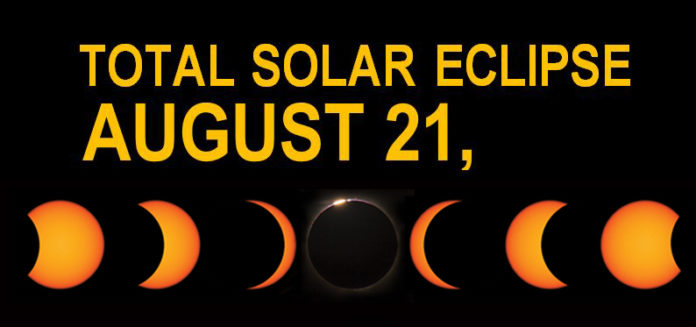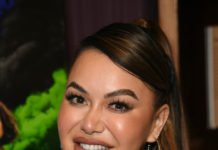Cómo experimentar el Gran Eclipse Solar norteamericano sin dañar la visión
(English version below)
El 21 de agosto, millones de personas en los Estados Unidos observarán un eclipse solar total pase sobre América del Norte. La última vez que esto ocurrió de costa a costa fue el año 1918.
Las temperaturas bajarán rápidamente mientras que la luna va cubriendo completamente el sol. Usted podrá ver los colores y luces de la atmósfera solar, una visión que se presenta únicamente durante un eclipse solar total. 
Los médicos oftalmólogos, especialistas en el cuidado ocular médico y quirúrgico, advierten al público, que se prepare con protecciones adecuadas en los ojos.
Si usted mira, tan solo un pequeño pedazo de un sol creciente, por detrás de la luna, es suficiente para causarle daños irreversibles a su visión.
Russell N. Van Gelder, MD, Ph.D., portavoz para la Academia Estadounidense de la Oftalmología, ha tratado a pacientes que han perdido la visión, mirando el sol.
“Es muy importante verlo con seguridad. Mirar el sol directamente, incluso por periodos pequeños, puede causar daños permanentes en la retina y producir la ceguera. Tengo pacientes que miraron el sol hace 40 años y siguen careciendo de visión central, en los ojos afectados”.
El Dr. Gelder explica, que los lentes en los ojos actúan como un lente de aumento, uno que es cinco veces más poderoso que un lente de aumento portátil.
Piense cómo se utiliza este lente de aumento para enfocar el sol para quemar agujeros en papel. Eso es lo que ocurre cuando mira el sol sin las protecciones adecuadas de los ojos. Usted enfoca el sol en la retina, quemando agujeros en las células fotoreceptoras sensitivas a la luz produciendo la ceguera.
Hay una excepción de la regla. Hay una breve fase durante un eclipse solar total cuando es seguro mirar el sol directamente. Esta fase se denomina totalidad, y dura unos 2 minutos. Ocurre cuando la luna bloquea totalmente la cara brillante del sol. Pero apenas comienza el sol a reaparecer, usted debe colocarse de nuevo los filtros solares.
La trayectoria completa para el eclipse solar total del 21 de agosto de 2017, es de casi 70 millas de ancho y se extiende desde Oregón hasta Carolina del Sur. Pasa por Idaho, Wyoming, Nebraska, Kansas, Missouri, Illinois, Kentucky, Tennessee, Georgia, Carolina del Norte y Carolina del Sur. Fuera de la trayectoria de totalidad, los observadores del cielo verán un eclipse solar parcial.
No hay excepciones para ver un eclipse solar parcial con seguridad. Para asegurarse de que las personas conozcan los hechos, la Academia Estadounidense de la Oftalmología se ha asociado con la Sociedad Astronómica Estadounidense para ofrecer cinco consejos:
– Utilice anteojos de eclipse solar, especialmente diseñados para bloquear los rayos dañinos del sol. Los anteojos habituales, incluso los oscuros, no son suficientemente fuertes para proteger los ojos. Hasta la fecha, solamente cuatro fabricantes han certificado que sus anteojos solares para eclipses y visores solares portátiles cumplen las normas internacionales de seguridad: Estos son Rainbow Symphony, American Paper Optics, Thousand Oaks Optical y TSE 17.
– Inspeccione su filtro solar antes del eclipse, y no lo utilice si está rallado o dañado.
– Otra opción es ver el eclipse a través de vidrio de soldador #14. Es mucho más oscuro que la protección que los soldadores normalmente usan.
– Utilice filtros solares en los lentes de cámara, binoculares y telescopios.
– No utilice anteojos de eclipse solar para mirar por una cámara, binoculares o un telescopio. El sol puede derretir el filtro y dañar los ojos.
Para más información puede visitar en Internet el sitio: www.aao.org
SOLAR ECLIPSE
Experience the Great American Solar Eclipse without damaging your vision
American Academy of Ophthalmology offers tips on how to safely view this once-in-a-lifetime event
On August 21, millions of people in the United State will see day turn to night as a total solar eclipse passes over North America. The last time this happened from coast to coast was 1918. Temperatures will drop rapidly, as the moon completely covers the sun.
While you cannot completely prepare yourself for the sight of a total solar eclipse, ophthalmologists — physicians who specialize in medical and surgical eye care — want you to be prepared with proper eye protection. Viewing even the smallest sliver of a crescent sun peeking out from behind the moon is enough to cause irreversible damage to your vision.
Russell N. Van Gelder, MD, Ph.D., a clinical spokesperson for the American Academy of Ophthalmology, has treated patients who have lost vision to the sun.
“The complete solar eclipse is a wonderful and memorable phenomenon that should be experienced by everyone in the eclipse path,” said Dr. Van Gelder. “Viewing the sun directly, even for brief periods, can cause permanent damage to the retina and result in blindness. I have patients who viewed the sun 40 years ago, who remain without central vision in their affected eyes.”
Dr. Van Gelder explains that the lenses in your eyes act like a magnifying glass, one that is 5 times more powerful than a handheld magnifier. Think about how you can use that typical handheld magnifier to focus the sun to burn holes in paper. That’s what happens when you look at the sun without eye protection. You focus the sun’s light on the retina, burning holes in light-sensitive photoreceptor cells, causing blindness.
There is one exception to this rule. There is a brief phase during a total solar eclipse when it is safe to look directly at the sun. This phase is called totality, and it lasts about 2 minutes. It occurs when the moon entirely blocks the sun’s bright face. But as soon as the sun begins to reappear, put the solar filters back on. The path of totality for the Aug. 21, 2017, total solar eclipse is about 70 miles wide and stretches from Oregon to South Carolina. It passes through Idaho, Wyoming, Nebraska, Kansas, Missouri, Illinois, Kentucky, Tennessee, Georgia, North Carolina and South Carolina. Outside the path of totality, sky watchers will see a partial solar eclipse.
There are no exceptions to the rules for safely viewing a partial solar eclipse. To make sure people have the facts, the American Academy of Ophthalmology has teamed up with the American Astronomical Society to offer these five tips:
– Use specially designed solar eclipse glasses and viewers to block the sun’s harmful rays. Ordinary sunglasses, even dark ones, are not strong enough to protect your eyes. To date, only four manufacturers have certified that their eclipse glasses and handheld solar viewers meet international safety standards: Rainbow Symphony, American Paper Optics, Thousand Oaks Optical, TSE 17.
– Inspect your solar filter before the eclipse, and don’t use it if it’s scratched or damaged.
Another option is to view the eclipse through #14 welder’s glass. That’s much darker than the shades arc welders typically wear.
– Use solar filters on camera lenses, binoculars, and telescopes.
– Do not use solar eclipse glasses to look through a camera, binoculars or a telescope. The sun can melt the filter and damage your eyes.∆



























